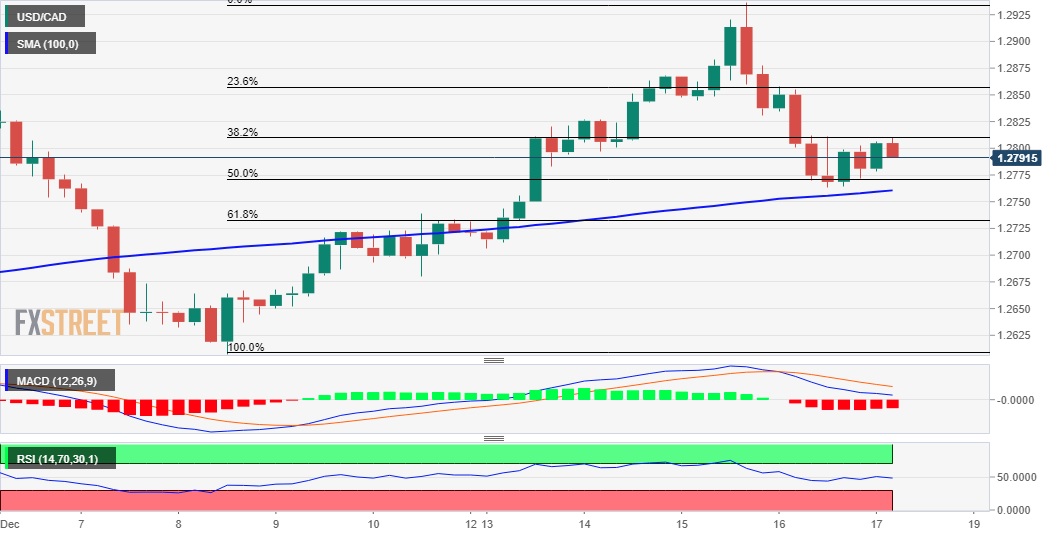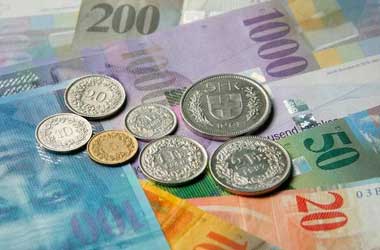 While the Canadian dollar was trading about 1.284 in mid-December, it had weakened from a roughly one-week peak of 1.27933 reached on December 16th, as top central banks took a more hawkish tone in contradiction to the Bank of Canada’s announcement. Investors were beginning to come to deal with the reality that interest rate hikes are on the horizon in 2022, with the Federal Reserve signalling three rate hikes by the end of next year, the Bank of England and the Norges Bank both raising their cost of borrowing, and the European Central Bank slowing its bond-purchase program.
While the Canadian dollar was trading about 1.284 in mid-December, it had weakened from a roughly one-week peak of 1.27933 reached on December 16th, as top central banks took a more hawkish tone in contradiction to the Bank of Canada’s announcement. Investors were beginning to come to deal with the reality that interest rate hikes are on the horizon in 2022, with the Federal Reserve signalling three rate hikes by the end of next year, the Bank of England and the Norges Bank both raising their cost of borrowing, and the European Central Bank slowing its bond-purchase program.
Nevertheless, the Bank of Canada (BoC) disappointed investors’ hopes for a change to a more hawkish policy position, citing the new variation Omicron as a source of concern for the economic rebound. In addition, the Bank of Canada established a deal to maintain its 2 percent inflation objective and to take the state of the labour market into account when making monetary policy decisions, implying that interest rates might remain low for a longer period of time during times of hardship.
As a result of the Omicron version having a negative impact on demand, benchmark crude oil prices fell sharply on Friday. Brent crude oil fell by $1.20 per barrel to US$73.82 per barrel. The West Texas Intermediate (WTI) crude oil price fell by US$1.06 per barrel to US$71.32 per barrel. The price of Western Canadian Select (WCS) fell by US$0.83 per barrel to US$56.04 per barrel.
The country’s budget deficit stood at CAD 3.68 billion in October of 2021, compared to CAD 18.5 billion in the same month last year. In the year ended December 31, revenues climbed by 30.9 % to CAD 31.5 billion, mostly as a consequence of an increase in tax receipts and other income. In the meanwhile, costs were lowered by 17.3 percent to CAD 35.2 billion, with a 22.0 percent fall in direct program expenses to CAD 15.9 billion and a 42.0 point drop in employment insurance benefits to CAD 2.4 billion being the primary drivers of the reduction.
To provide an economic and fiscal report, the federal government presented a report on December 14 for the initial time since the April budget and the over $30 billion in expenditure that has occurred since then. Since Budget 2021, the federal government has committed $71.2 billion for policy initiatives through 2026-2027, with $28.4 billion set aside specifically for this fiscal year and the next two.
With billions of dollars committed to Canada’s COVID-19 action plan and economic rebound, the Economic and Fiscal Update 2021 intends to offer Canadians with a clear peek at the country’s finances while also keeping them informed about the important objectives of combating the pandemic and assisting people and businesses in their efforts to recover. When it came to the battle against the epidemic, this year’s report promised even more, while simultaneously projecting a decrease in the national deficit. The shortfall for fiscal years 2021-22 is projected to be $144.5 billion, a decrease from the projected deficit of $154.7 billion in the spring budget.
It is possible that this decrease is attributable to increasing government income. Price constraints are projected to persist as a consequence of international supply chain constraints and pandemic threats. This is expected to result in a consumer price index rise of 3.3% in 2021 and a further boost of 3.1 percent in 2022, according to predictions. The supply chain relief program has been allocated $50 million in order to help Canadian ports in obtaining capability for cargo storage as well as other congestion-removal initiatives. A little amount of purchasing occurred throughout the Asian session on Friday, and the USD/CAD pair seems to have halted its post-FOMC pullback decline from the 1.2935 region, which corresponds to its peak point since August 20, for the time being.
Because of the rapid spread of the Omicron coronavirus type, there has been concern that the enforcement of new limitations may result in a decrease in fuel consumption. Because of this, crude oil prices fell, depreciating the commodity-linked loonie and assisting the pair to recover its upward momentum after many months of decline. Moreover, the economic threats associated with the latest coronavirus strain have dampened investors’ desire for assets that are deemed to be more risky. An overall softer tone in the financial markets was indicative of this, which benefited the dollar’s comparative safe-haven position as compared to its Canadian equivalent.
Aside from this, the Federal Reserve’s hawkish view for the economy served as an additional boost for the US dollar. This was considered to be yet another reason that contributed to the bid tone around the major being positive.
Nonetheless, an unexpected interest rate increase by the Bank of England, combined with a more hawkish tone taken by the European Central Bank, weighed on the USD and limited the pair’s gains. Despite this, the pair has continues to sustain small gains thus far, and it is now trying to expand on this momentum over the 1.2800 barrier and beyond. As long as there are no significant market-moving economic announcements, either from the United States or from Canada, the pair will be at the whim of the US/oil market volatility.
Taking a technical look at the pair, it was able to establish some support at the 1.2765-60 zone, which corresponds to the 50 percent Fibonacci level of the recent strong upward rise in the range of 1.2608-1.2937. For short-term traders, this corresponds with the 100-period simple moving average (SMA) on the 4-hour chart and should serve as a critical crucial point.
A decisive break below 1.2720 would hasten the decline towards the 61.8 percent Fibo level, which is in the vicinity of the 1.2720 zone. There will be some follow-through selling, which will result in a subsequent dip below the 1.2700 line, which will cancel out any near-term bullish bias. The pair might therefore become susceptible to a challenge to the monthly swing low, which is now around the 1.2600 round number.

On the other hand, momentum over the 1.2800 level has the ability to propel the pair towards the 23.6 percent Fibonacci retracement level, which is now in the mid-1.2800s. Bullish traders would benefit from further gains above and above this level, as it would indicate that the corrective retreat has completed its run and shift the bias again in their favor. It is possible that the pair will attempt to retake the 1.2900 level and prolong the bullish trajectory even higher towards the monthly month high, which was reached around the 1.2935 zone on Wednesday.




